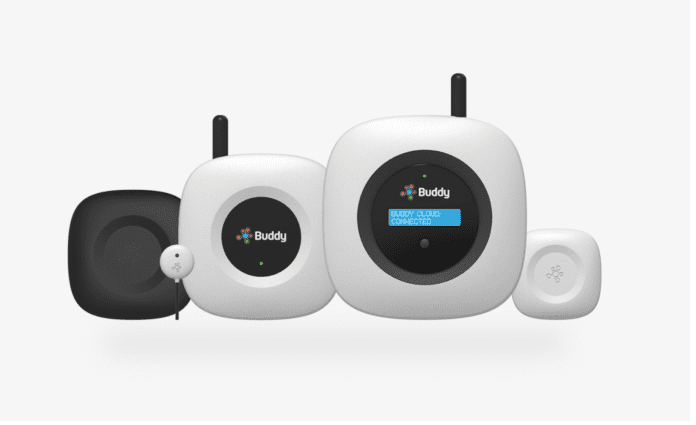U.K.-based IoT solutions and connectivity provider Pangea and Australian building technology specialist?Buddy have collaborated to create a ?Fitbit? for smart buildings. Together the companies have developed a self-clipping device for commercial and industrial buildings which uses IoT sensors and SIM-enabled connectivity to track energy data on virtually any building device or devices ranging from entire floors to an individual desk.
The smart building device, which can be installed in a matter of hours, adheres to a building surfaces and communicates with the Buddy platform using Pangea?s cellular IoT connectivity.
The companies say it goes far beyond just providing vital data for building systems such as water, electricity, temperature and humidity consumption of single or multiple buildings.
?It?s more than just a tracker. The data collected helps your building tell a story of where and how energy is being used and puts businesses back in control. Our goal is to address and solve a very real, tangible problem that every industry will face at some point,? said Dan Cunliffe, managing director of Pangea.?
The smart buildings device is designed to monitor energy usage patterns and identify anomalies before a problem crops up and enables building operators to set efficiency targets to meet government green standards and reduce the operating costs with ease and peace of mind.
The sensors can detect building vitals on by a room-by-room basis, facility or functions such as lighting or heating and communicate readings through IoT gateways which aggregate the data and pass it to the Buddy Cloud for processing.
While the gateways can connect via Wi-Fi or Ethernet, the most common method is to join cellular networks, which allows the system to remain independent of underlying networks. ?Buddy’s platform resource monitoring solution Ohm also provides real-time data to operators mitigating operational risks and improves cost savings for building owners in the long-run.

Deploying measurement and verification in smart buildings
The companies say the best way to turn a building into a smart building and measure its footprint is to ?plug-in? to the building rather than reviewing energy costs on spreadsheets and make adjustments to meet budget on a quarterly basis.
One of the keys ways to gain actionable insights into a smart building and measuring a ?valid? footprint is by gathering data at an increased frequency which entails taking multiple readings are per hour, instead of per month or per quarter.
The implementation leverages a process known as ?measurement and verification? (M&V) which not only provides insights into building vitals but also enables operators to verify bills from energy suppliers and confirm whether energy use claims are accurate.
The companies note that M&V systems are more difficult and costly to deploy in retrofits and are better suited for new builds.

